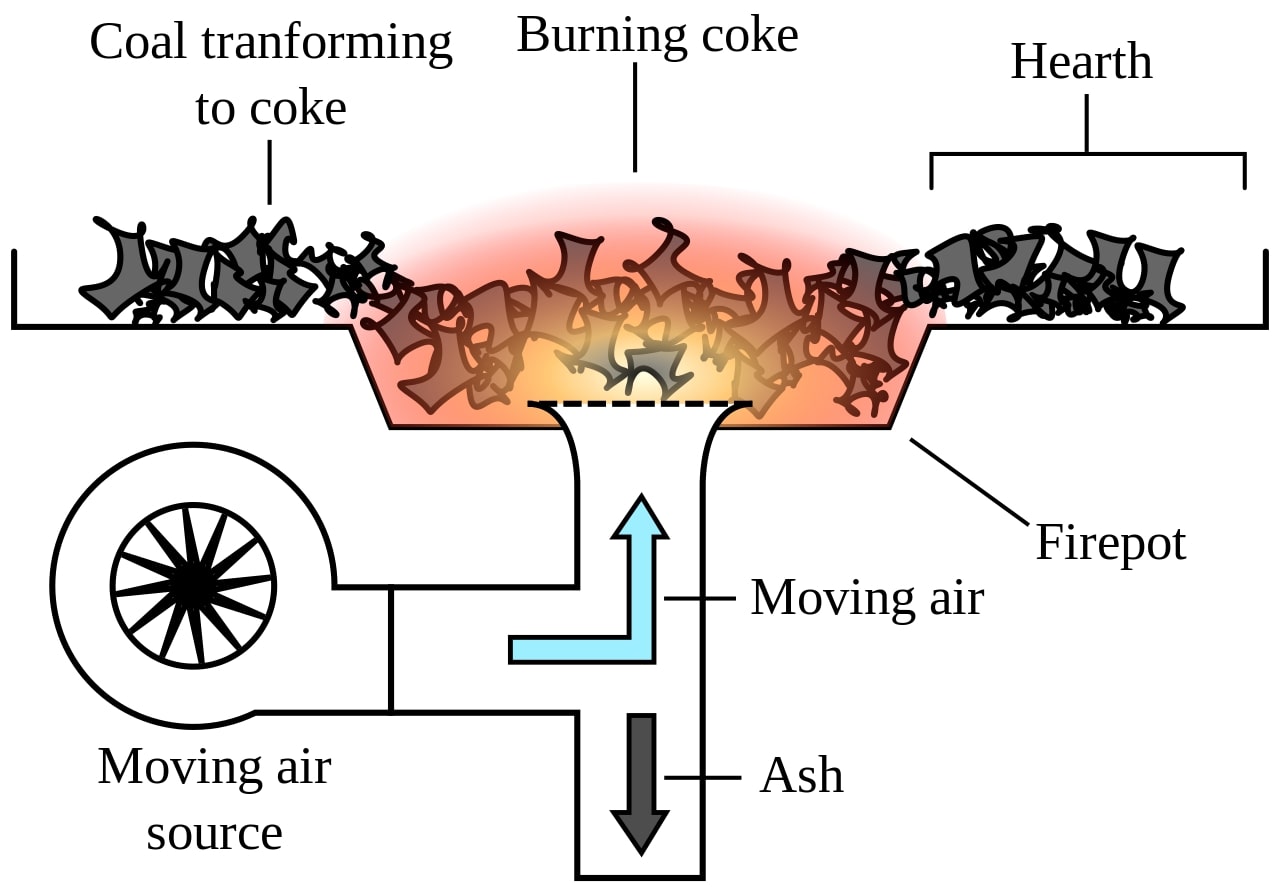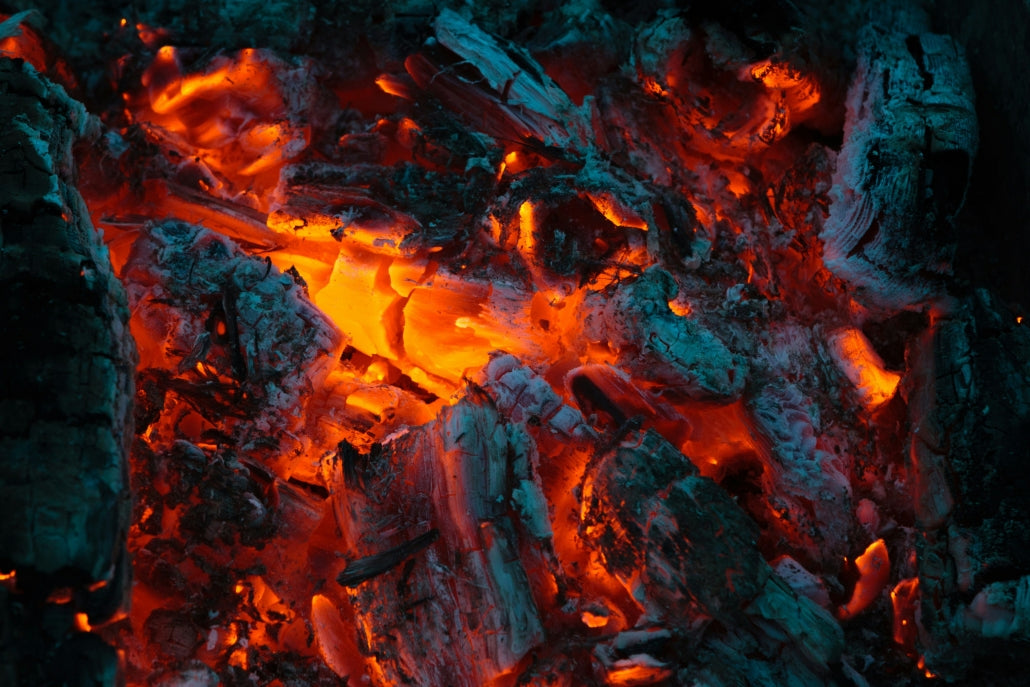Lighting a forge is the first step to blacksmithing. Before you pick up an iron or a hammer, you need a heat source that will get your metal to the right temperature. A coal forge should burn at approximately 1650-2204oC (3000-4000oF) when lit, so you need to light it well to heat the metal enough.
How to light a coal forge
If you’re lighting a forge with blacksmith’s coal or coke, these steps will help you get it going with a constant, even temperature.
1. Kindling
First, you need to gather some kindling. This is anything that will burn more easily than coal when it’s cold. You can use dry twigs, newspaper or small pieces of wood. These are often free resources and can get you started.
However, starting a fire with kindling alone can be tricky, as the kindling burns up quickly and may not last long enough to ignite the coals. If you find this to be the case, shop-bought firestarters can get you off to a good start.
Firestarters are relatively inexpensive but quickly burn at a high heat. With a firestarter, you don’t need as much kindling, so they in handy when you’re short of wood or newspaper.
2. Start the Fire
Light your kindling or firestarter in the bottom of the forge and allow the materials to burn for a few seconds.
3. Add Coke
Coke is the lighter, faster-burning coal by-product that forms on the edges of your fire. If you’re working in a forge that has been lit before, you should have some small coke to use. You can buy coke beans to help light the forge.
Rake some smaller coke up close to your burning kindling, without covering the fuel. You don’t want to put the fire out right away, just to heat the coke and start it burning.

4. Add Air
After a few seconds, the coke will be heating and start giving off smoke. This smoke will look different to the initial kindling smoke, as it is higher in carbon.
At this point, you want to increase the air supply to the fire. Your forge might have built-in air supply, or you may need to use bellows.
Adding air floods the fire with oxygen and encourages it to burn hotter.
5. Add more Coke/Coal
When the first bit of coke is ignited you can start raking more coke towards the fire. Go slowly to avoid suffocating the fire early on. Slowly, the flames should spread outwards and generate more heat.
Keep adding air from the bellows as needed until you have a good steady burn.
Lighting a Coal Forge Takes Practice
It may take a little longer than a propane forge, and you may need to try these steps a few times to light the coals, but with practice, you’ll be able to start your day in the forge quickly and easily every time.

